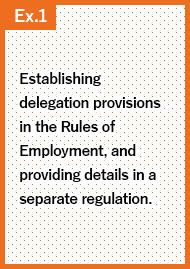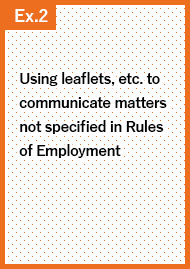Four key points for an effective anti-harassment response
(1) Make continuous efforts to improve anti-harassment measures
Anti-harassment measures are not complete simply when a system has been put in place. Also note that the measures that are effective will vary between companies. Therefore it is important to continue working to enhance measures on an ongoing basis, in line with laws and regulations and the circumstances of the specific company.
(2) One-off communication and awareness initiatives are not enough
Make ongoing efforts to communicate anti-harassment messages to all workers via means such as...
・Holding regular training
・Conducting level-based training, with a focus on manager level personnel
・Conducting training for non-regular workers such as part-time workers and temporary (dispatch) workers, in addition to permanent (non-fixed term) workers.
・Conducting training when new employees join the company or when there are many personnel transfers.
(3) Inform all workers by email, etc. whenever a notification is posted or updated
Some companies post notifications on their internal networks, but if the workers are unaware of the posting this information cannot be considered to be properly communicated and understood. All workers should be notified by email or other means whenever postings or updates are made.
(4) Regularly assess the state of the workplace and use this information to help prevent harassment.
Understanding the awareness of workers and the real state of harassment through internal questionnaires, etc., as well as gathering opinions on internal measures can help prevent harassment in the workplace and create a pleasant and fulfilling work environment.
Ex.1: Establishing delegation provisions in the Rules of Employment, and providing details in a separate regulation.
Examples where delegation provisions are established in the Rules of Employment, with details provided in a separate regulation.
Download(word)
Ex.2: Using leaflets, etc. to communicate matters not specified in Rules of Employment
In the case that disciplinary provisions are specified in the Rules of Employment, and that the response for handling acts classified as workplace harassment is already readily available in these rules, informing workers that harassment in the workplace falls under this scope via means such as pamphlets, leaflets, company newsletters, and company website is an effective measure of communication.
Examples of using leaflets, etc. to communicate matters not specified in Rules of Employment
Download(word)








